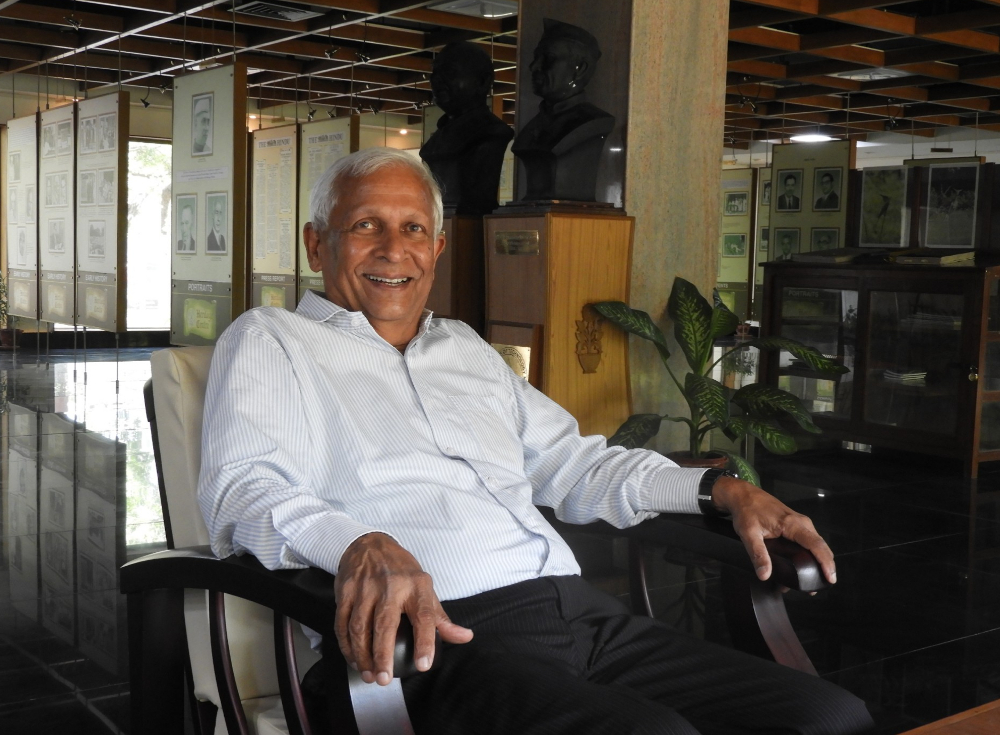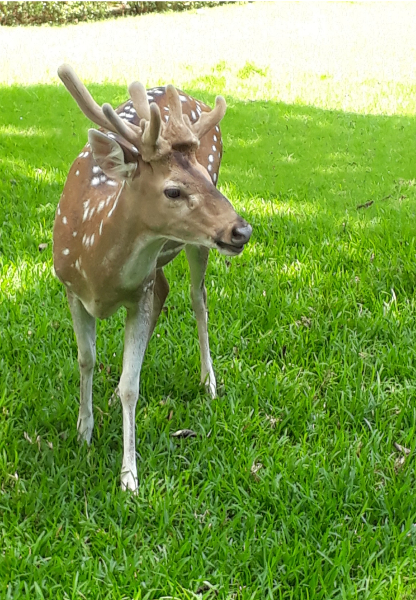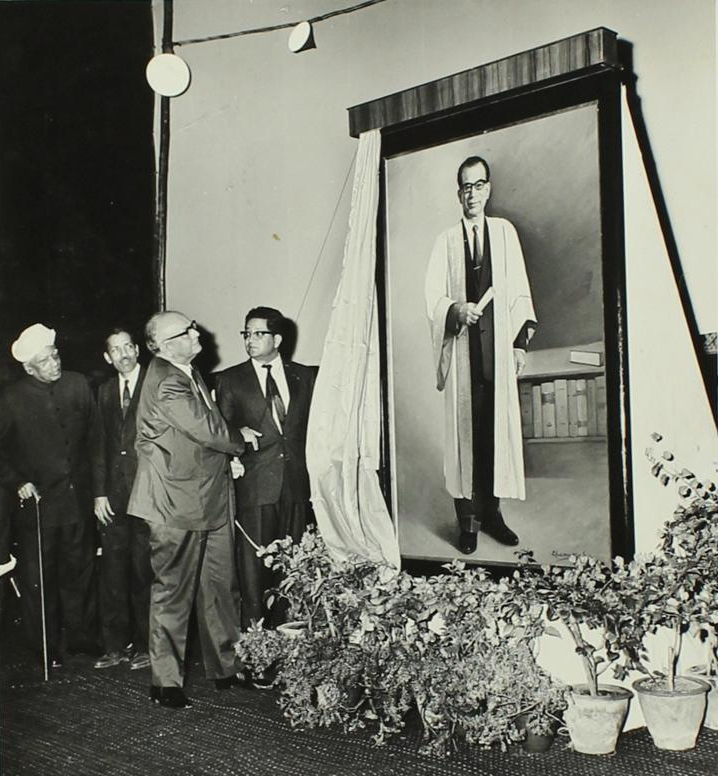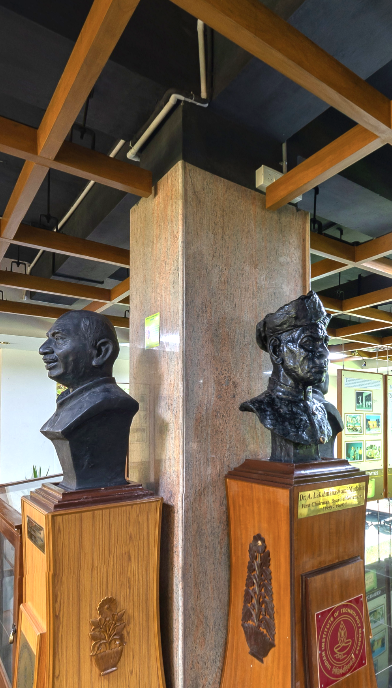
-
Something in the genes
Dec 24, 2019
Kumaran Sathasivam
Over the last 3 years or so, the Heritage Centre has been creating a series of videos called the Oral History videos. As the name suggests, these videos aim to document IIT stories. They are talks, interviews, conversations and discussions featuring faculty members, alumni, staff members and other people associated with IIT Madras. Some 60 videos have been made to date, and they have been made available online through the website of the Heritage Centre.

In 2018, I interviewed Mr. Venkatesh Mannar, a Distinguished Alumnus awardee, for one of the Oral History videos. Mr. Mannar graduated from the institute in 1970. During 1967–1968, he was the Editor of Campastimes, IIT Madras’s own magazine. If you have gone through issues of Campastimes you will know just how enjoyable the magazine was. It makes for enjoyable reading even today. Even before meeting Mr. Mannar, I had gone through the issues edited by him, and they were no exception. I liked particularly the brand of humour in these issues, which manifested in the form of poetry, cartoons and the feature known as Classified Divertisements. This column had ludicrous ‘divertisements’ such as these:
The Indoor Club will remain closed today due to fine weather. Outdoor Club Secretary please note.
Announcement
The swimming pool will positively be inaugurated at the end of the rainy season at the football field.
I use Ponds Cauliflower.
As it happens, the Editor of Campastimes in 1966 was Dr. Marti G. Subrahmanyam (also a Distinguished Alumnus awardee), who is Mr. Venkatesh Mannar’s brother.
I hope that it will not be considered untowardly hasty of me if I were to place on record here the fact that at least one more pair of brothers edited Campastimes during the 30-odd year history of the magazine: my brother, Kurinji Sathasivam, was one of this pair. The other was, well, me. Kuri and I were editors in the 1980s.
Were there any other brothers who edited Campastimes, or for that matter any of the other institute magazines? I do not know. The Campastimes collection at the Heritage Centre is not complete, and we do not have a comprehensive list of editors. But I would not rule out the possibility. Certainly, many brothers have studied at IIT Madras. Why, brothers of at least three of my batchmates (we graduated in 1985) have studied at the alma mater.
You would think that it would be very remarkable, if not downright unlikely, to find a family from which three siblings studied at IITM. I offer to you the suggestion that this is not improbable. Consider this: The participants in one Oral History discussion, Prof. Aniruddan and Prof. Shrikant Vedantam, both grew up on campus. And they both had two siblings each who studied in the institute. Two brothers of Prof. Aniruddan and two sisters of Prof. Shrikant Vedantam got degrees from IIT Madras.
“That was a coincidence”, I hear you say, “Surely there has been no instance of four members of a family studying at IIT Madras.” Think again.
Three children, the sons, of my batchmate Gladston are IIT Madras graduates! Four members of a family.
Come, come, surely, four is the record—there has been no family from which five members have studied at our institute, right? Wrong. I do know of one family from which there are five IIT Madras graduates: the first of these was Mr. Pradeep Mallick (1965); his cousins Messrs. Shaman, Subhash and Raman graduated in 1968, 1969 and 1969, respectively; and in 1973, it was the turn of Mr. Pramod, Mr. Pradeep Mallick’s brother.
And this is just the students we are talking about. We have not even started to look at the administrators and faculty members. Consider the first Chairman of the Board of Governors of IIT Madras, Dr. A. Lakshmanaswamy Mudaliar, well known as ‘Dr. A.L. Mudaliar’. His son Prof. A. Ramachandran took over as the Director of the institute even when Dr. Mudaliar was the Chairman. Another son, also known as A.L. Mudaliar, was Chairman between 1987 and 1991. And a fourth member of the family, Prof. Ramachandran’s son Dr. A.R. Balakrishnan, has retired as a member of the faculty at IIT Madras.
There must be something about some genes.
Promise
The glass sides of the Heritage Centre look out on lawns of the brightest green. The low table surrounded by sofas is a good place to gaze upon one of these lawns.

here are spotted deer that come a-grazing
The table is also an excellent place at which to read a book, work on your laptop or have a meeting. If you were sit at this table for any length of time, presently your attention will be drawn to an animal straying on to the lawn or traversing it. Occasionally dogs come over and roll on the grass.
Every evening monkeys bound across the lawn—this is something to do with their evening retirement rituals. At other times it is a domestic cat or common myna that stalks across the grass. Sometimes there are more exotic visitors at the pelouse such as a long-legged cattle egret or a spotted deer.
The deer decides to sit down and rest for a while at times. When this happens, you have the best armchair viewing experience of spotted deer possible. You never carried out in greater comfort an appreciation of the spotted deer than from the sofa at the Heritage Centre of an afternoon, an open book in front of you.
“This one is a stag,” you say to yourself, as you study the subject on the other side of the glass. “It has antlers on its head. The antlers of the spotted deer, are, as in most other cervids (that is what deer are technically known as, you know), shed annually”. You scrutinise the animal, and you declare, “The antlers are covered in thick soft skin—this is a deer ‘in velvet’”.
Now, each antler of your average spotted deer stag has three terminal branches, or tines. “The graceful antlers have three tines, a long brow tine set nearly at right angles to the beam and two branch tines at the top”, is how S.H. Prater states it. The tines are referred to as ‘points’ in the hunting literature.
Your particular spotted deer seems to be an aberrant individual. Its antlers are veritable bouquets of points.
You decide to put a number to this phenomenon, in true scientific tradition, and you count. There are five tines on each antler, 10 in all.
You reflect on the matter for some time and then turn back to your book. “We need to watch the career of this fellow”, you tell yourself, “He might emerge a true 10-pointer in the end”.
Eating humble pie
This is an update about Prof. Sengupto’s portrait (Questions, questions, Letter from Heritage Centre, 8 January 2017):

- One of the convocation booklets in our collection clearly states that the portrait was unveiled by Dr. M.S. Thacker. I had barked up the wrong tree in concluding that the gentleman was Dr. Emil Lehnartz! But you must agree that there is a strong similarity of appearance. Here was a good lesson in history all right: do not come to hasty conclusions!
- The answer to the question about the date of the OAT unveiling ceremony must now be re-examined.
- Prof. M.S. Ananth answered the question about where the portrait had been stored before it came to the Heritage Centre: It had been at the Central Library.
- Mrs. Mahalakshmi Gourishanker provided the answer to the question about the identity of the person in the dhoti, shawl and waistcoat. He was the painter of the portrait. We do not have his name at present, but we hope to find it yet.
Your response to Letter from Heritage Centre is welcome. Please send mail to heritage@iitm.ac.in
The Heritage Centre is located in the ground floor of the Administration Building, IIT Madras. It is open on weekdays from 9.30 am to 5.30 pm.
- Contribute
to the Centre -
Monetary
Support - Digital
Material









